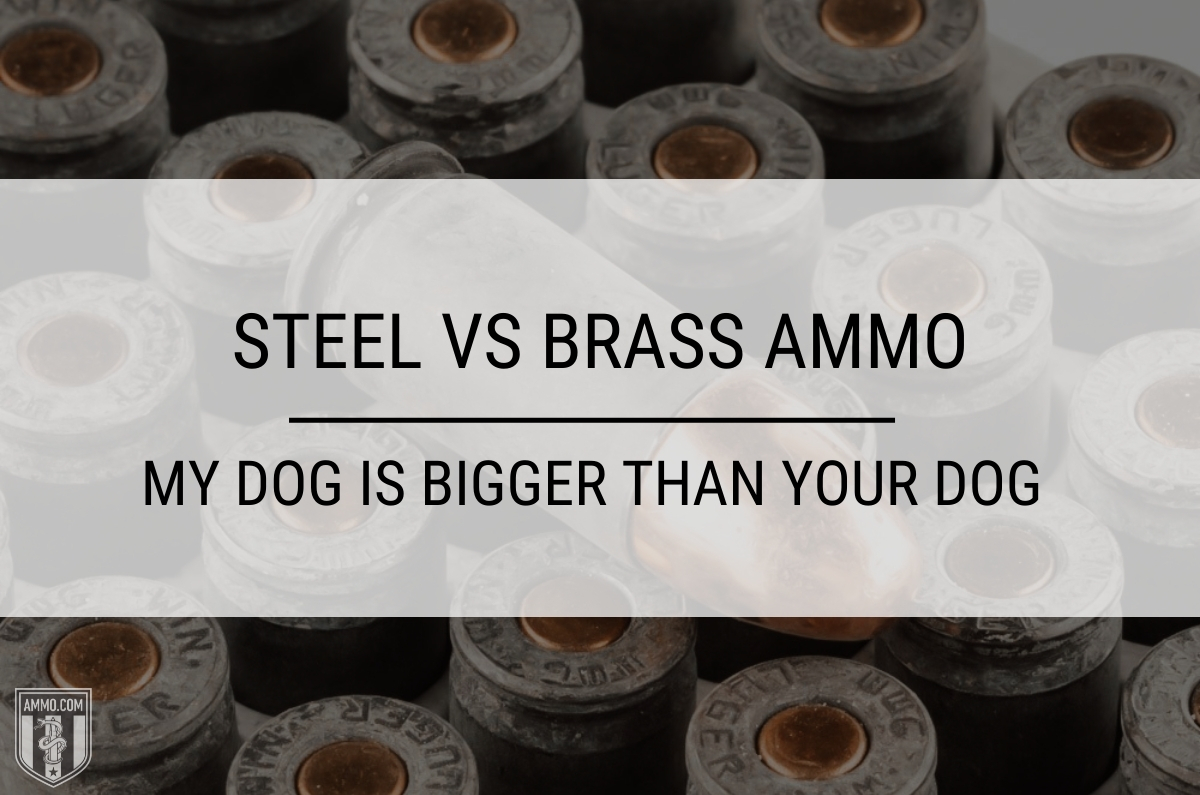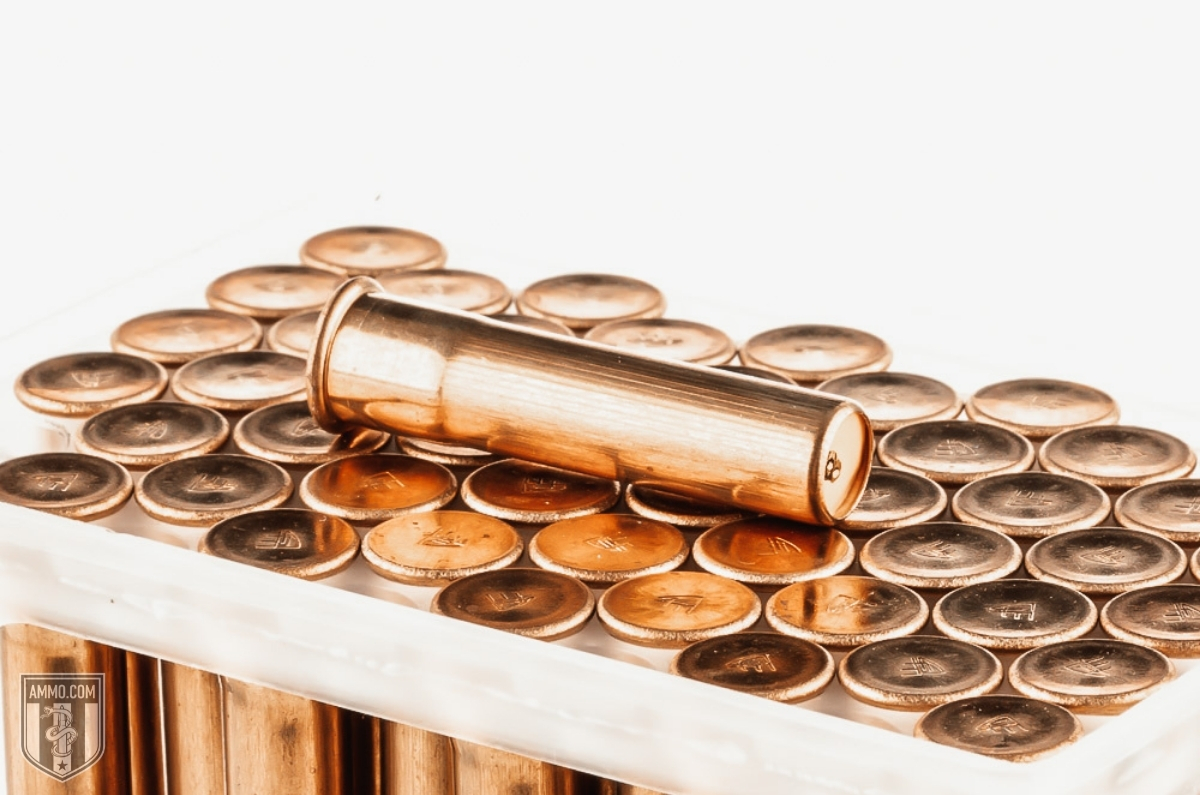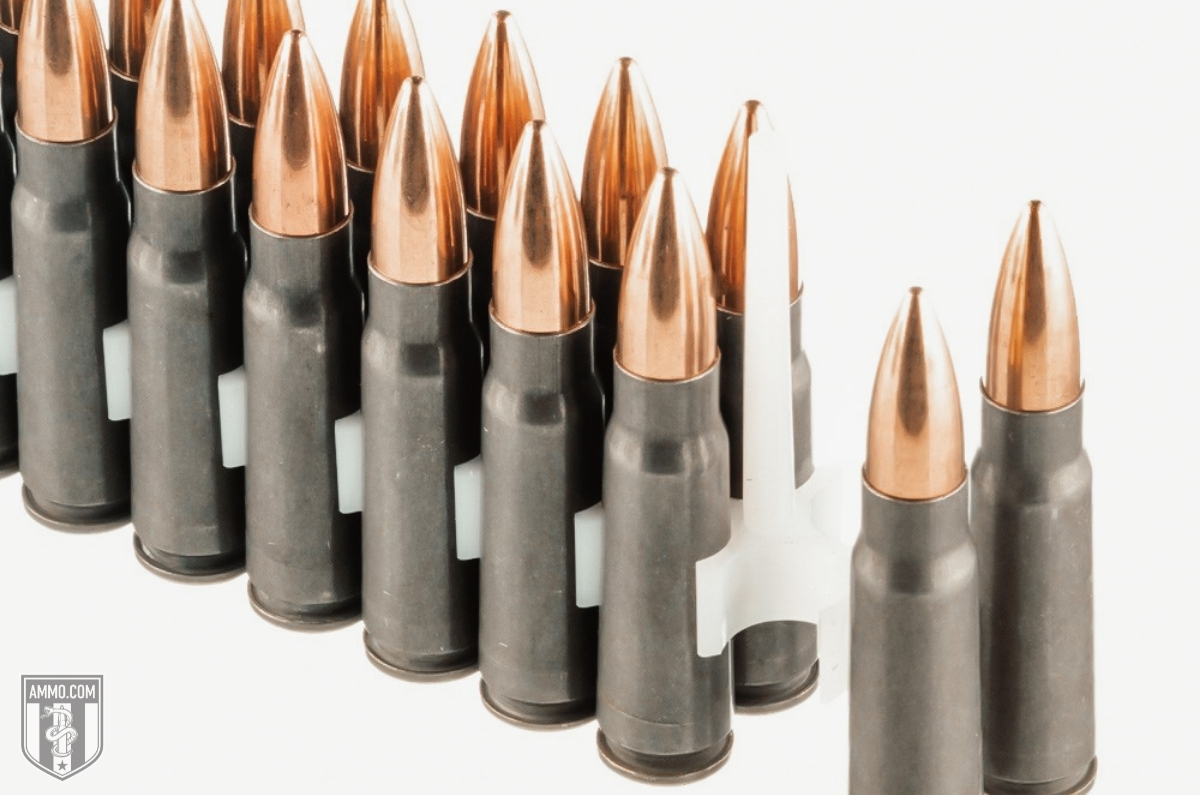Steel vs Brass Ammo: My Dog Is Bigger Than Your Dog
 When it comes to gun owners, we all like to think that our choice is always the superior option. Search any gun forum and you can find countless debates about Glock vs 1911, 9mm vs 40 S&W vs 45 ACP, and AR vs AK – just to name a few.
When it comes to gun owners, we all like to think that our choice is always the superior option. Search any gun forum and you can find countless debates about Glock vs 1911, 9mm vs 40 S&W vs 45 ACP, and AR vs AK – just to name a few.
When it comes to steel cased ammo vs brass cased ammo, each camp has its hardline members who have drawn up the battle lines for decades at this point saying things like:
“You shouldn’t shoot steel in your AR-15, it will wear out your extractor!”
“I used steel cased ammo in my AR and SKS all the time with zero issues!”
“Brass cases are so expensive; steel cases are so much cheaper and clearly the way to go!”
These are a few quotes from a gun forum of which I’m a member, and they clearly give you an idea of how firm many gun owners are in their ways. But who is right? Does the data accurately support their claims that their steel case dog is bigger? Or is the brass case dog the meanest dog on the block?
Let’s settle the steel vs brass ammo debate once and for all. Load some mags of steel cartridges and brass cased ammunition, and we’ll see which type of ammo works best for you!
Brass Case Ammo: The Innovation that Changed the Firearms Landscape Forever
The first self-contained firearms cartridges were developed in the mid-19th century. Initial designs were extremely simple, just a percussion cap and a bullet on top. However, innovators were quick to react to the new technology and new metallic cartridge cases were developed in short order.
To say the least, the metallic cartridge was one of the biggest innovations of its time. No longer did soldiers have to carry powder, wadding, and bullets into battle and assemble them in the field. The cartridge case was and all-in-one solution to this problem and greatly increased the rate of fire of any soldier who used it.
Once developed, most all militaries quickly adopted the new technology as it was a clear upgrade to their muzzle-loading rifles and handguns. By 1870, all modern militaries were using brass cased ammunition.
Several different types of metals were tested in early case designs. Ultimately, brass was the winner and here are the reasons why.

Brass Case Ammo: Pros
The first pro for brass cased ammunition is that brass is very malleable. This means that a brass case can be reformed without breaking or splitting. Allowing for a simpler manufacturing process which reduces the overall cost of the ammo.
Malleability is also critically important during the firing procedure. When the powder inside the brass case is ignited, the case will evenly and predictably form to the chamber of the firearm. This makes a tight seal against the chamber and limits the amount of gas and carbon fowling that blows back into the chamber, reducing the wear and tear on your firearm.
Since brass is malleable, this means it is also reloadable. Part of the reloading process is reforming the cartridge case to its original dimensions, and you can do this with brass cases.
Furthermore, brass cased ammunition is typically boxer primed, which is also critically important if you want to reload your cases.
Another pro for brass casings is that brass has a high surface lubricity. This equates to smooth feeding from the magazine, into the chamber, and out the ejection port.
Brass is also naturally corrosion resistant, so it can endure harsher conditions and not succumb to rust and decay. Don’t make the mistake in thinking they are corrosion proof – trust me, they will corrode eventually. However, it is at a much slower rate than steel cases.
As brass is softer than steel, wear and tear on your extractor will also be lower.
Lastly, brass cased ammo is typically more consistent in terms of muzzle velocity consistency. This is primarily due to the manufacturing process which we will cover in the Steel Case Ammo section.
Brass Case Ammo: Cons
Although there are a ton of good things to say about brass ammo, there are also some downsides. The first being price. Brass ammo is almost always more expensive than their steel counterparts, typically to the tune of about 20% more expensive for brass.
The other downside against brass cased ammunition is that brass can sometimes fall victim to extraction issues in firearms which have a more violent extraction cycle.
Short-stroke gas piston designed rifles like the SKS, FN-FAL, Galil, and AK-47 utilize a high pressure and violent extraction process. With brass cases this hard extraction can cause case-head separation, leaving the case body stuck in the chamber.
Stuck cases can be a death sentence on the battlefield as it is unlikely that a soldier will have time to pull out his cleaning rod, tap out the stuck case out of the chamber, and then get his rifle back into the fight.
This is not to say that these firearms cannot fire brass case ammo reliably. Many firearms eat brass like candy without issues. However, the potential for that critical failure is still present.
Steel Case Ammo: Born From Necessity
During WWI many countries experienced a shortage of brass, or they simply couldn’t get brass at all. This led to the experimentation of using steel cases instead. Germany was the first to experiment with steel cases and they used them through WWII.
During WWII, Canada, the UK, and United States also experimented with steel cases primarily for their 1911A1 handguns chambered in 45 ACP.
Although the US and NATO stuck to brass cases after WWII, the Russians and Warsaw Pact nations embraced steel cased ammo and designed their new battle rifle, the AK-47, around steel cases.
The AK-47 and its steel cased ammo, the 7.62x39mm, were then, and remain a symbol of simplicity, rugged durability, and unparalleled dependability. But how do steel cases match up against brass casings? Let’s take a look!

Steel Case Ammo: Pros
Without a doubt, the #1 pro for steel cased ammo is the price. Manufacturing steel cases is even simpler than brass and the material cost of steel is dirt cheap. This leads to a very low price point for steel cased ammo, typically around a 20% discount if not more.
Many of the SKS and AK-pattern proponents will contest that steel casings function better as they were designed to utilize looser chamber tolerances and utilize violent extraction. Now, it’s incredibly difficult to validate those claims, but the added case rigidity will aid in reliable extraction for these Soviet Era firearms.
Steel Case Ammo: Cons
Although steel cased ammo is extremely cheap compared to brass, steel is not without downsides.
First, steel is an extremely rigid metal and is not as malleable as brass. This means that the case will not form a tight seal around the chamber and more carbon fouling and gasses will be deposited into the chamber. This adds excess wear and tear on your rifle and its internal components.
Another issue with steel casings is that steel lacks surface lubricity and requires a coating to ensure reliable feeding and extraction. Typically, a lacquer or polymer coating is added to the steel cases to ensure proper function. All the major Russian ammo manufacturers like Brown Bear, Silver Bear, Wolf, and Tulammo will utilize such coatings.
There has been anecdotal talk on the Internet that the lacquer coating will melt off during long strings of semi-auto fire and cause a build up in the rifle’s chamber. However, as you’ll read a little later, this isn’t actually in agreeance with reality.
Steel cases are typically Berdan primed, meaning it is a major pain for reloaders. However, since the steel case is so rigid, reloading steel cartridges is nigh impossible unless you like stuck cases in your reloading dies.
The short version is that steel cartridges are one-time use.
Another downside to steel cases is that they are not naturally resistant to corrosion like brass. However, the polymer and lacquer coating do add some corrosion resistance.
Many steel case detractors will point out that steel cased ammo is less consistent and inaccurate. This may be true if you are shooting Tula, Brown Bear, or Wolf, but this is more a reflection of the ammo manufacturer than the case itself.
Hornady manufactures a match-grade steel cased ammunition. Though it is hard to come by these days, users of Hornady Steel Match reported excellent results and I’d pit it against any other match-grade ammo out there.
One thing to consider is that many shooting ranges will not allow steel cased ammo. This might be confusing, but it is due to the steel core bullets that some surplus Russian ammo contains.
The most famous occurrence of this was with Russian 7N6 5.45x39mm surplus ammo that contained a mild steel core (and was subsequently banned from import by the ATF).
Many indoor ranges utilize a steel bullet containment system to stop bullets fired on the range. Steel core ammo will damage these systems, greatly reducing their lifespan, and cost the range extra money to have them repaired.
Furthermore, steel core ammo can cause ricochets on indoor ranges which is a major safety hazard to the shooter and fellow patrons.
Lastly, many shooting ranges will sell spent brass that shooters discard, and they do not want an added step of removing steel cases that could give reloaders headaches.
The final downside of steel case ammo is the steel jacketed bullets that most Russian manufacturers use. Technically it is referred to as a bi-metal jacket that is made from steel and copper. By comparison, fmj ammo made in the USA is copper jacketed.
The bi-metal jacket greatly increases barrel wear, meaning that you will need to purchase a new barrel for your rifle a lot sooner than if you shot copper jacketed bullets.
Now that’s a lot of cons, but we’ve got one big question we need to answer here…

Is Steel Cased Ammo Bad For Your Gun?
Shooting high volumes of steel cased ammo through lighter extraction rifles, such as the AR-15 carbine, will accelerate barrel wear and extractor wear. This means you will need to purchase a new barrel and extractor sooner than you would with brass cased ammunition.
But listen, there’s more to it than that, so let me give you the long answer.
This question about the increased wear and tear on AR-15 carbines when using steel cases has been debated for years among gun owners. A torture test was developed to determine the effects of shooting 10,000 rounds of brass cased and steel cased ammunition out of 3 different Bushmaster carbines. What stands out to me is that the Federal brass cases had zero stoppages over 10,000 rounds while Wolf and Brown Bear had 15 and 9, respectively. Now that may sound like a lot, but that’s a 99.85% success rate for Wolf and 99.91% success rate for Brown Bear.
Those are impressive numbers!
The carbine-length barrels were shot out after about 4-5,000 rounds of steel cased ammo. ‘Shot out’ means that the barrel wear is so extreme that accuracy takes a nosedive off a cliff. By comparison, the barrel using exclusively Federal brass cased ammo still had acceptable accuracy after 10,000 rounds and did not need to be replaced.
Now let’s be honest, most shooters will never put that volume of steel cartridges through their AR-15. However, if you do, you will need to get a new barrel and extractor sooner than you’d expect with brass cased ammunition.
But the next big question is, does the cost savings from shooting steel case ammo outweigh the cost of a new barrel and extractor?
Yes, it does.
If you do consistently shoot steel cased ammo out of your AR-15 you can offset the price of a new barrel and extractor with the cost-savings of the ammunition.
However, this means that you need to stay on top of your rifle maintenance a lot more than you would with brass cased ammunition, and some shooters just don’t want to deal with that.
In the end, the choice is yours, but the numbers support using steel cased ammo if you don’t mind the added maintenance.

Can You Reload Steel Casings?
No, steel casings are one-time use cases and should NOT be reloaded.
As I mentioned earlier in the article, reloading steel cartridges is not an option.
Steel is not malleable enough for reloading dies to successfully reform the case back to SAAMI specifications and maintain their effectiveness.
This means you’d be able to resize a few steel cases before your reloading dies were rendered useless due to the damage the cartridge case caused.
Furthermore, most steel cased ammo is Berdan primed, which is a royal pain for any reloader. Brass cartridges are, by contrast, Boxer primed which is extremely simple to replace. This is due to differences in the flash hole design of Berdan vs Boxer primed ammo.
If you’re a reloader like me, there is no choice. Brass cases are the ONLY choice for reloading.
Conclusion: Steel or Brass?
There’s no denying that steel case ammo is extremely affordable and cost effective if you want to shoot a lot on the cheap. You do have to stay on top of your maintenance schedule otherwise your accuracy and reliability will suffer.
But which one would I pick?
Well, if my self defense handguns (Glock and 1911) and my AR-15 could talk, I suspect they would say something like this if I loaded a magazine full of steel cases:

It’s brass ammo all the way for me. I love reloading and this simply isn’t an option with steel cases. Furthermore, I love the added reliability that brass casings offer and their corrosion resistance for long term storage.
But what’s best for YOU? Only you can answer that! And there is no wrong answer.
If you have zero reloading aspirations, then grab some Wolf or Tula steel cased ammo and just keep a simple log of how many rounds of steel cartridges you’ve cracked off. Replace your barrel, extractor, and springs in your AR-15 at 5,000 rounds and you’ll be just fine.
If you plan to shoot a rifle descended from the fine comrades of Eastern Europe, steel should be what you feed your beast. However, if you like reloading or just enjoy the added reliability and barrel life but don’t mind the added cost, it’s brass all day long.
Furthermore, I’d recommend brass case ammo for all your self defense firearms. You want that added reliability and confidence when everything is on the line.
No matter which you choose, get out to the shooting range and keep those marksmanship skills high!
